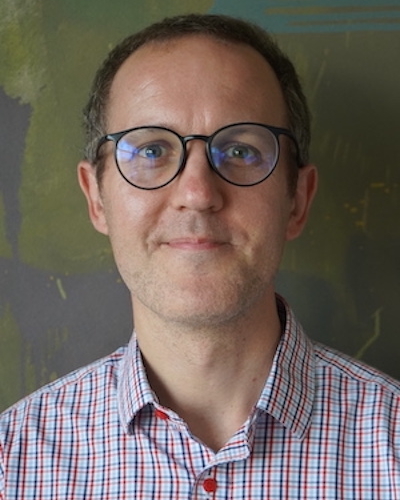Dr. Adam Smith joins the College as Director of the Center for Teaching & Learning, manager of The Learning Commons
Wednesday, October 25th, 2023

For Dr. Adam Smith, taking over as Director of the Center for Teaching & Learning, and Learning Commons Manager, comes with several goals.
“The position checks a lot of boxes,” Smith says. “It really elevates the relational: not only does the director communicate with different offices and initiatives, that means that person communicates with people across campus, that leadership sees value in sharing space and talking to each other.”
In essence, Smith says, the director is “a point of collaboration/partnership with and in support of our faculty.” And, as manager of the Learning Commons, “I’ll be able to think about tangible and relational support for teaching and learning here at PCA&D.”
Center for Teaching & Learning
As a faculty developer, Smith brings nearly 10 years of experience working with faculty and students of various levels. With an interdisciplinary Ph.D. in Fine Arts from Texas Tech University, he saw the potential to bring together his different worlds — faculty development and the arts.
“Having worked in multiple university-wide teaching centers,” Smith says, “I bring a wide range of disciplinary collaborations and interactions with faculty. I have experience working with instructors at all levels: those who identified as beginners or novices, while still being content experts, to those who were pursuing advanced projects of personal interest related to teaching.”
Smith has served in a variety of positions at large research-intensive universities, including Penn State University, Texas A&M University, and Texas Tech. At Penn State, he worked with faculty and graduate students across a system serving nearly 90,000 students at more than 20 campuses. Moving to the PCA&D “microcollege” model, he says, means he’s excited for “the chance to make more individual connections with instructors.”
He also looks forward to focusing more on conversations about teaching and learning within the arts.
“I believe we’re capable of learning from each other across disciplinary lines,” he says, “but I also believe that disciplines share a teaching dialect of sorts.” And he anticipates encouraging the artist-teachers at PCA&D to inform the conversations on teaching and learning.
“I want the Center to be something that instructors feel is ‘theirs’ in the sense that it reflects their interests, their ways of thinking and doing, and their authentic questions about teaching and learning in the arts.”
The Learning Commons
While Dr. Smith has focused primarily on instructor development in his previous roles, it was the combined role of Learning Commons Manager as an additional element of the position which appealed to him.
“At many big universities, resources that address teaching, learning, and student success all exist in different offices, if not different buildings,” Smith says. “The chance to bring these conversations into a common space means that everyone can impact how we discuss teaching and learning.”
Part of Smith’s goal for The Learning Commons, he says, is to emphasize that its services are not just aimed at students who may be struggling and in search of extra help. Instead, he says, The Learning Commons also can be a place where students who are seeking extra challenges in classwork can find the support and motivating factors for that, too.
About Carly Rae Jepson …
Dr. Smith may be a musician, a pianist with degrees from the Jacobs School of Music Indiana University and from Texas Tech, but that doesn’t mean he’s wed to any one particular genre of music.
In fact, he says, “my tastes in music are broad. Though my degrees are in classical piano performance, I’m an avid fan of many kinds of music: jazz, classical, and pop of various flavors (I’m a big fan of Carly Rae Jepson; sorry Swifties!)”
“As much as I carry around the role of faculty developer, I also carrot around an identity of practicing and performing musician. This helps me feel comfortable shifting in conversations between the ways artists talk about ‘practice’ and the more conceptual ways we discuss teaching and learning.”
Above all, Smith says, he looks forward to working with faculty to highlight existing efforts around teaching and learning, and to integrate results of those discussions into offerings from both The Center for Teaching & Learning and The Learning Commons.
“My door is generally open,” he says, “and the threshold for meeting with me doesn’t need to be formal. If you’re curious about something related to teaching and learning, that alone is reason enough to reach out, and I’d be more than happy to think with you on whatever it is that you’re curious about.”
